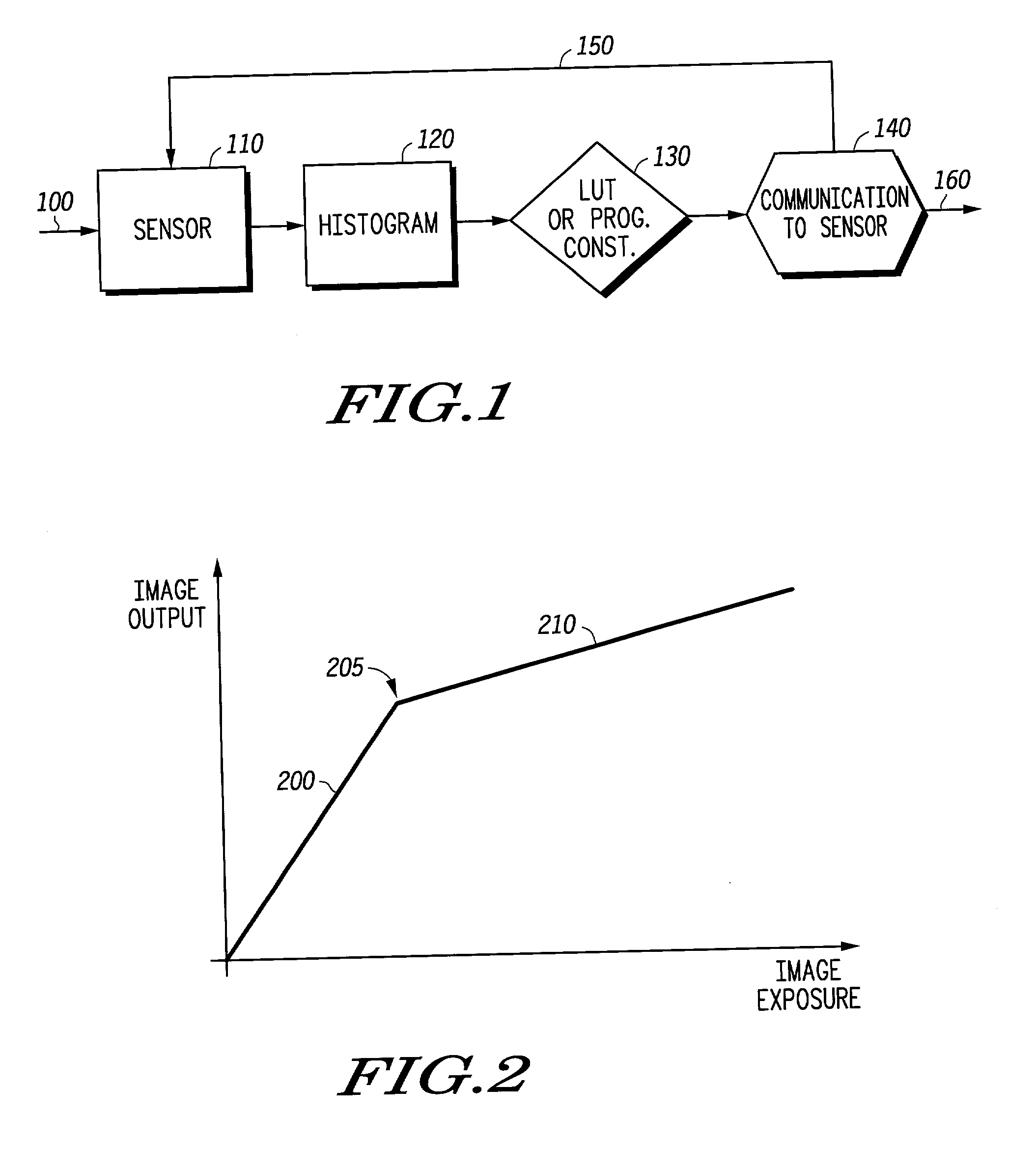Automatic exposure control for digital imaging
- Summary
- Abstract
- Description
- Claims
- Application Information
AI Technical Summary
Problems solved by technology
Method used
Image
Examples
first embodiment
[0041] The difference between the median or mean provided by histogram block 120 and the target exposure level of LUT 130 gives both the direction and magnitude of the desired global (or, in a different embodiment, color-by-color) exposure increases or decreases required to achieve exposure compensation. There are at least two embodiments that may be used to achieve this increase or decrease. In a first embodiment, a fixed lookup table (e.g., LUT 130) may be used to determine the appropriate exposure compensation. For instance:
[0042] if Median-Target=<<<0, then a large exposure increase is applied to the sensor;
[0043] if Median-Target=<0, then a small exposure increase is applied to the sensor;
[0044] if Median-Target.apprxeq.0, then little if any exposure increase or decrease is applied to the sensor;
[0045] if Median-Target>>>0, then a large exposure decrease is applied to the sensor;
[0046] if Median-Target>0, then a small exposure decrease is applied to the sensor.
[0047] In differe...
second embodiment
[0051] In a second embodiment, an absolute exposure increase or decrease may be applied, based upon the percentage difference between the target and measured exposure levels. For instance:
Exposure.sub.new=Exposure.sub.current+(% difference)*Exposure.sub.current; or, rewritten
Exposure.sub.new=Exposure.sub.current*(1+(% difference)),
[0052] where (% difference) is the percentage difference between the Median (or mean) and Target values (a positive percentage representing that the Target is greater than the Median). Thus if the Target is 20% greater than the Median (or mean), then:
Exposure.sub.new=Exposure.sub.current*(1.20).
[0053] In other words, the new exposure is increased by 20%. LUT block 130 may perform this calculation to determine the appropriate exposure compensation to be relayed to the sensor block 110.
[0054] Turning again to FIG. 1, feedback block 140 is shown. In one embodiment, feedback block 140 outputs final image data for use and / or viewing via signal 160. It also feed...
PUM
 Login to View More
Login to View More Abstract
Description
Claims
Application Information
 Login to View More
Login to View More - R&D
- Intellectual Property
- Life Sciences
- Materials
- Tech Scout
- Unparalleled Data Quality
- Higher Quality Content
- 60% Fewer Hallucinations
Browse by: Latest US Patents, China's latest patents, Technical Efficacy Thesaurus, Application Domain, Technology Topic, Popular Technical Reports.
© 2025 PatSnap. All rights reserved.Legal|Privacy policy|Modern Slavery Act Transparency Statement|Sitemap|About US| Contact US: help@patsnap.com


